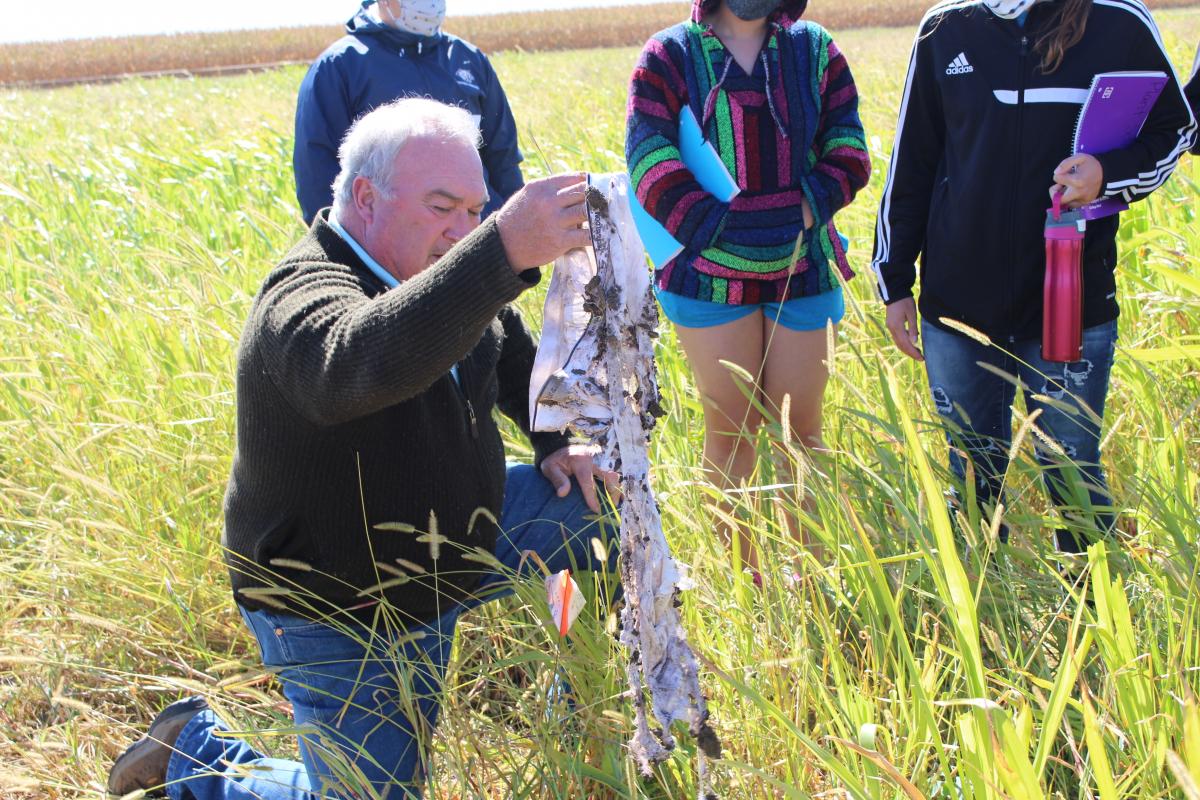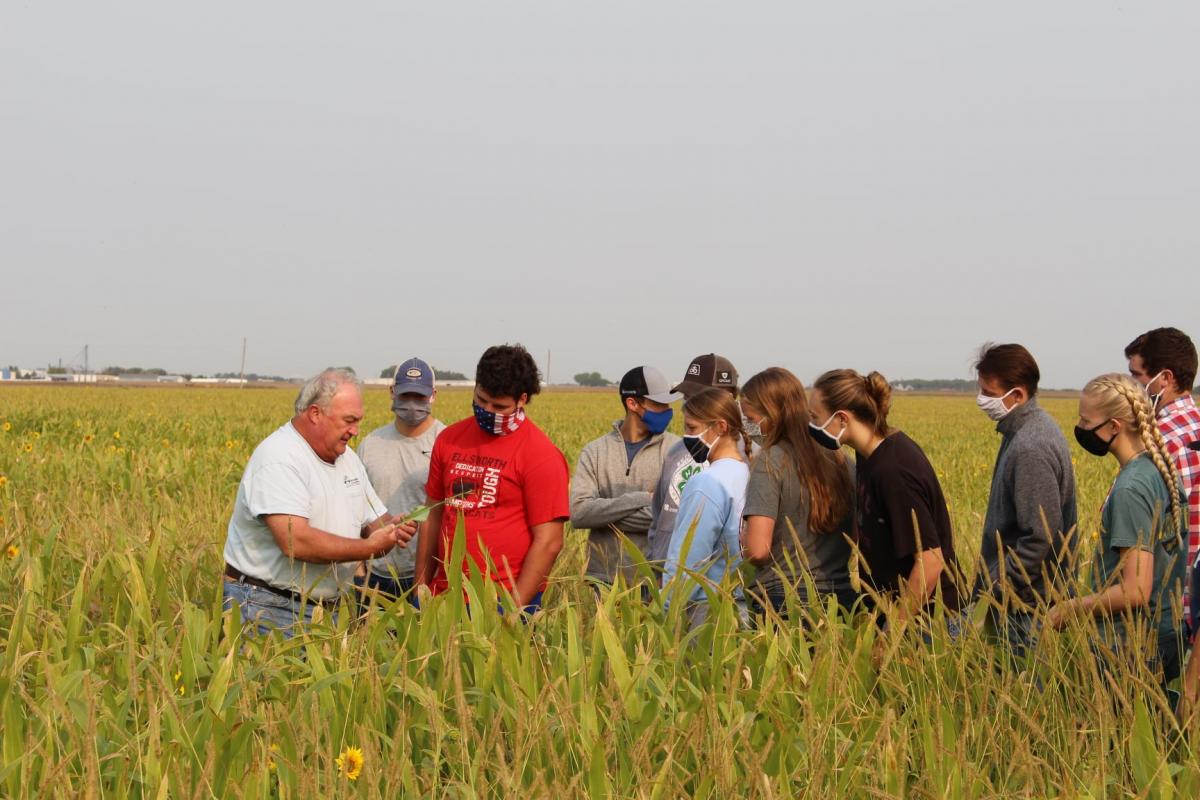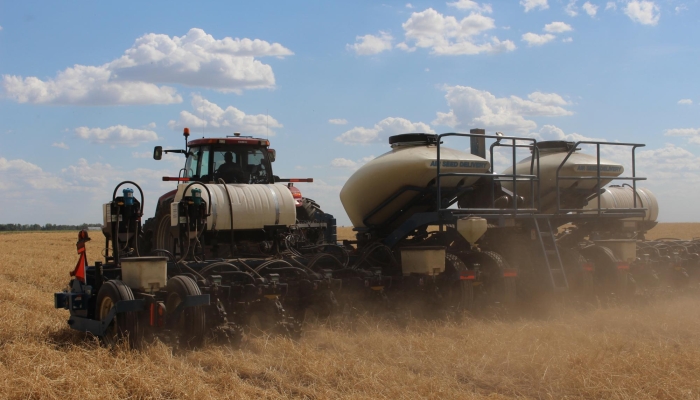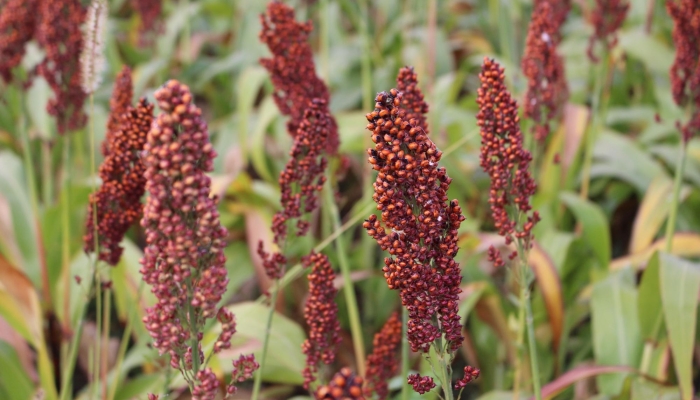Testing Reveals Economic Impact of Soil Health
A side-by-side comparison of soils from the Project GROW (Growing Rotational Crops on Wellfield) site and an adjacent field that is conventionally farmed shows the difference practices like no-till, cover crops, and rotational cropping can make.
In early May, NRD staff collected soil samples from two fields owned by the City of York that surround the city’s wells. One of the fields is managed by the NRD as a demonstration site for soil health practices and profitability over maximum yield, while the other field is farmed conventionally and represents the agricultural norm for the area. The 0-6” soil samples were sent to Ward Laboratories of Kearney for a Haney Soil Health Analysis. This test offers a more comprehensive look at the nutrient needs and overall health of a soil system. The Haney Test differs from traditional soil tests in that it also evaluates some soil health indicators such as soil respiration, the water-soluble fractions of organic carbon and organic nitrogen and the ratio between them. Finally, a soil health score is calculated based on a combination of these different soil health indicators.
The test results were straightforward—the Project GROW field reported a soil health measurement twice as high as the conventionally farmed field.
Additionally, measurements of soil respiration and microbially active carbon were more than three times higher in the Project GROW field compared to the conventional field. These numbers reflect the biological activity present in the soil. This is significant, as greater biological activity leads to greater mineralization of soil organic matter, which essentially means free fertilizer. When there are more naturally occurring nutrients available in the soil, less inputs are needed to maintain fertility, meaning an increase in overall profitability. The test results showed a nutrient value of $153.46 per acre for the Project GROW field, while the conventional field had a nutrient value of only $98.68. Thus, to have the same measure of fertility, the conventionally farmed field would need to add approximately $54.78 per acre in fertilizer inputs.
Dan Leininger gives a soil health demonstration to area college students in fall 2021. As a simple way to measure soil microbial activity, Leininger buried a pair of cotton briefs in the Project GROW field in June and exhumed them in October to allow students to see evidence of the nutrient cycling provided by microorganisms. 
When it comes to residual nitrogen in the soil, the Project GROW field had half as much as the conventional field. This is an important finding, as residual nitrogen if not utilized by a growing crop can leach below the root zone into the water supply and causes contamination that can be costly to remove. Consuming water that is high in nitrate-nitrogen has been linked to negative health outcomes. This type of contamination is a major problem for communities across the Midwest.
The 160-acre Project GROW site has been managed by the NRD for the past five years. Previously, it was conventionally farmed by others with no soil health emphasis. These Haney test results show how much improvement can be made in a soil system in a relatively short amount of time by implementing soil health practices. The benefit of this improvement in soil health is a greater measure of protection for the drinking water supply for the residents of York.
Interested in improving the health of your soil? Give us a call! We have funding available for producers to implement some practices. Call (402) 362-6601 and ask for Dan Leininger.

Students from Concordia University visit Project GROW for a soil health demonstration in 2020.


